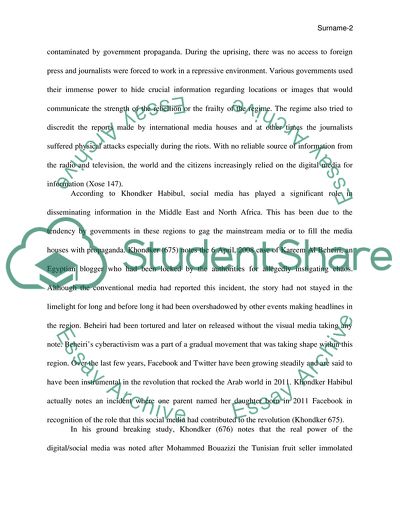Cite this document
(“The Role of the Digital/Visual Media in the Revolutions of the Arab Essay”, n.d.)
Retrieved from https://studentshare.org/visual-arts-film-studies/1640217-the-role-of-the-digitalvisual-media-in-the-revolutions-of-the-arab-spring
Retrieved from https://studentshare.org/visual-arts-film-studies/1640217-the-role-of-the-digitalvisual-media-in-the-revolutions-of-the-arab-spring
(The Role of the Digital/Visual Media in the Revolutions of the Arab Essay)
https://studentshare.org/visual-arts-film-studies/1640217-the-role-of-the-digitalvisual-media-in-the-revolutions-of-the-arab-spring.
https://studentshare.org/visual-arts-film-studies/1640217-the-role-of-the-digitalvisual-media-in-the-revolutions-of-the-arab-spring.
“The Role of the Digital/Visual Media in the Revolutions of the Arab Essay”, n.d. https://studentshare.org/visual-arts-film-studies/1640217-the-role-of-the-digitalvisual-media-in-the-revolutions-of-the-arab-spring.


